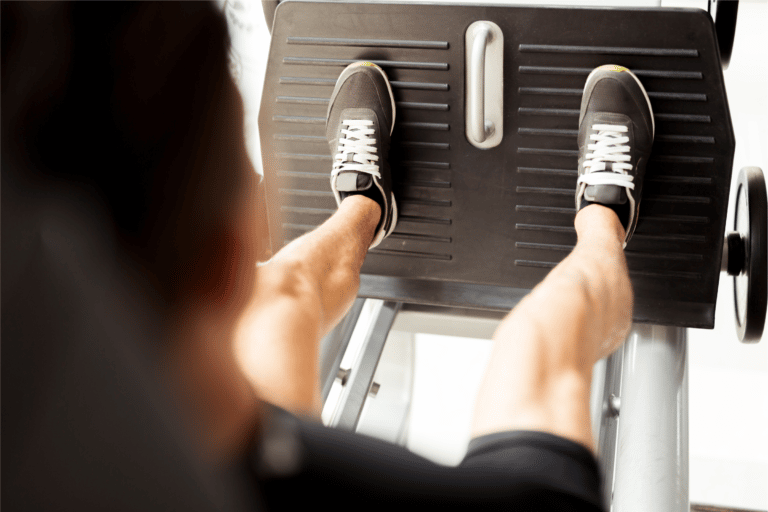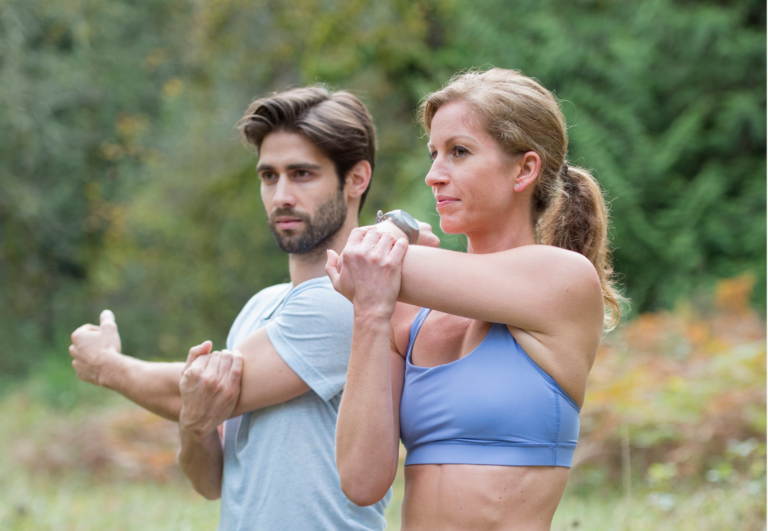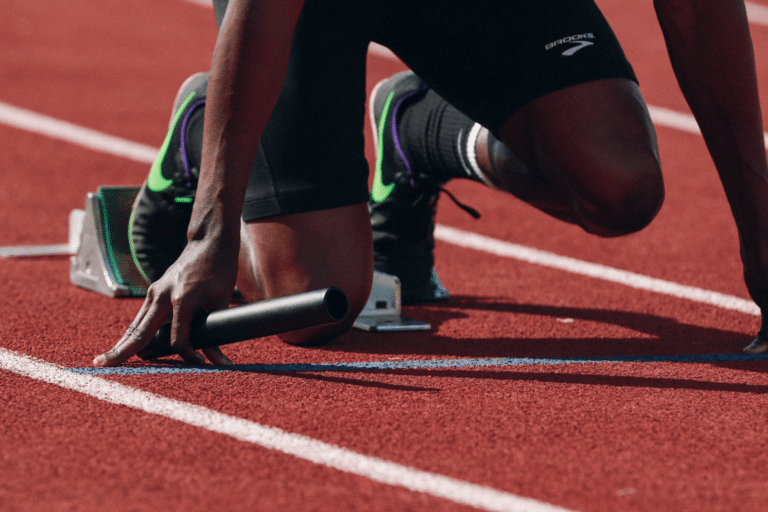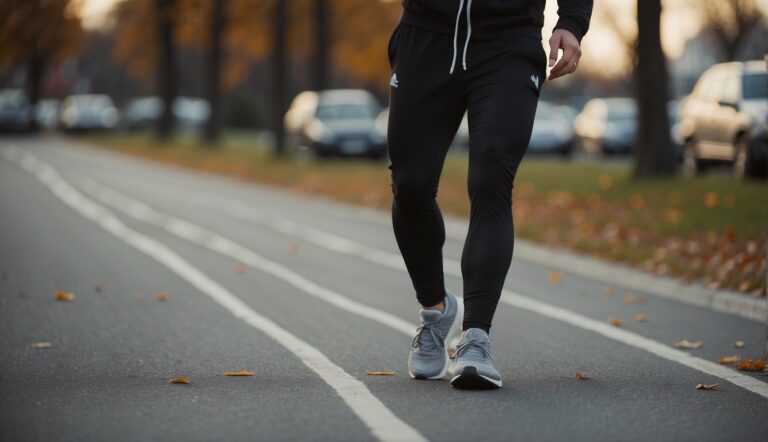How to Warm Up Hips Before Running: Essential Pre-Run Stretches
Warming up your hips before a run is as crucial as lacing up your sneakers. Proper warm-up routines can help ease your muscles into the exercise, potentially reducing the risk of injury and improving your performance. Many runners understand the value of warming up but may overlook the hips, which are pivotal for maintaining good running form and ensuring a full range of motion.

A series of dynamic hip exercises can help activate the muscles around the hip joint, increasing blood flow and flexibility in this key area.
Before you embark on your run, taking just a few minutes to focus on hip warm-ups can make a substantial difference to your comfort and running efficiency. These exercises shouldn’t be strenuous but instead should gently prepare your body for the workout ahead, setting a solid foundation for a safe and effective running session.
Dynamic Stretching Techniques to Warm Up and Activate the Hips
To ensure your hips are properly warmed up for running, incorporate dynamic stretches that encourage movement and flexibility. A balanced warm-up routine engages the hip joints, muscles, and surrounding areas.
High Knees and Hip Circles
To activate your hip flexors and elevate your heart rate, perform high knees by lifting your knees up towards your chest as you move forward. This exercise also aids in warming up your hamstrings and glutes. Follow with hip circles: stand on one leg and rotate the opposite knee in a circular motion to improve joint mobility.
| Movement | Description | Duration |
|---|---|---|
| High Knees | Raise knees to chest level while moving forward | 30 seconds |
| Hip Circles | Rotate one knee in wide circles, switching legs | 15 circles each leg |
Leg Swings and Side Lunges
Leg swings help to loosen the hamstrings, hip flexors, and glutes. Swing one leg forward and back, then side to side, holding onto a stable surface for support. Integrate side lunges to work on lateral movement; step to the side and sink into your hips, keeping the other leg straight, then push back to the starting position.
- Leg Swings – 10 swings in each direction per leg
- Side Lunges – 10 lunges on each side
Walking High Kicks
To target the hamstrings and improve leg extension, execute walking high kicks. Kick one leg up while keeping it straight, reaching towards the foot with the opposite hand. Take a few steps and alternate legs.
- Walking High Kicks – 15-20 kicks on each leg
Hip Openers or Gate Openers
For hip opener stretches, also known as gate openers, stand and lift your knee towards your chest, then open your knee out to the side, making a circular motion. These stretches are instrumental in warming up the muscles in your hips and inner thighs, promoting better movement.
- Hip Openers – 10-12 repetitions each side
Squat to Stand
The squat to stand exercise enhances overall hip mobility and is effective in warming up the muscles surrounding your hips. Begin by squatting down, grasp your toes, and then raise your hips to feel a stretch in your hamstrings and glutes before returning to a squat position.
- Squat to Stand – 10 repetitions
Incorporating Running-Specific Movements Into Warm-Ups
Effective running warm-ups facilitate increased blood flow to your joints while improving elasticity and power in key areas such as the ankles, calves, and hips. They specifically prepare you for the dynamic nature of running.
Running Drills and Strides
Running drills, such as high knees or butt kicks, simulate running mechanics and prime your muscles by activating the joints involved in running. Strides, which are short bursts of running at a fast pace, help transition your body from a static state to the demands of running performance.
- High knees: Perform with an emphasis on driving your knee upward.
- Butt kicks: Mimic the phase of pulling the heel to the glute.
Executing these drills for 30 seconds each can significantly prepare your body, providing a running-specific warm-up that ensures greater mobility and readiness.

Plyometric Exercises for Power
Introduce plyometric exercises to boost your explosive power and sprinting ability. These exercises enhance your running performance by conditioning your muscles to exert maximum force in short intervals, thus improving elasticity and power in your ankles and calves.
Example plyometric exercises include:
- Jump squats
- Box jumps
Aim for 2-3 sets of 10 reps each to stimulate the neuromuscular adaptations relevant to a sprinter. Such movements should be integrated carefully, with attention to form, to avoid undue stress on your joints.
Strengthening Exercises for Hip Stability and Mobility
Before you embark on your run, it’s crucial to gear up your hips with exercises that promote both stability and mobility. Strengthening the muscles in your hips, quads, and core will help maintain balance and improve your running performance.
Squats and Lunges
Squats:
- Purpose: Improve strength in hips, quads, and glutes.
- Proper Form: Stand with feet shoulder-width apart, bend knees to lower body as if sitting back into a chair, keeping chest up and back straight. Ensure knees do not go over toes.
Lunges:
- Purpose: Enhance balance and stability while targeting hip flexors.
- Proper Form: Step forward with one leg, lower your hips until both knees are bent at a 90-degree angle. Front knee should be directly above the ankle, back knee hovering just above the ground.
Planks and Glute Bridges
Planks:
- Purpose: Engage core, including hips and glutes, for overall stability.
- Proper Form: Position yourself in the forearm plank position, elbows under shoulders, and body in a straight line from head to heels.
Glute Bridges:
- Purpose: Target glutes and strengthen hips.
- Proper Form: Lie on your back with knees bent, feet flat. Lift hips upward, creating a straight line from shoulders to knees. Hold at the top for a moment before lowering back down.
By integrating these specific exercises into your warm-up routine, you’ll foster greater hip mobility and stability essential for a safe and efficient run.
Understanding Hip Anatomy and the Importance of Warming Up
Before discussing ways to warm up your hips for running, grasp the underlying structures involved and the key benefits of proper preparation. This ensures enhanced performance and a reduced risk of injury.
Anatomy of the Hips
Your hips are complex structures consisting of bones, muscles, ligaments, and tendons that work in harmony to provide stability and allow a wide range of motion. The joint at the center is surrounded by thick layers of muscle which facilitate movement, while the ligaments and tendons connect bones and muscles, ensuring joint stability. Properly lubricated by synovial fluid, the hip sustains smooth motion.
- Bones: Pelvis, femur (thigh bone)
- Muscles: Gluteals, hip flexors, adductors, abductors
- Connective Tissues: Ligaments (iliofemoral, pubofemoral, ischiofemoral), Tendons

Benefits of a Proper Warm-Up
A warm-up primes your body for the demands of running by increasing blood flow, improving mobility, and gently stretching muscles and connective tissues. This activates your muscles and increases the production of synovial fluid, which helps to lubricate the hip joint, enhancing the range of motion.
- Increased Blood Flow: Warms muscles, making them more pliable
- Enhanced Mobility: Prepares hips for the activity, reducing tightness
- Lubrication: Synovial fluid lessens friction in the hip joint
Risks of Skipping Warm-Ups
Ignoring warm-up routines elevates the risk of injury as cold, tight muscles are more prone to strains and sprains. Without warming up, you are also likely to experience decreased performance due to restricted mobility and poor muscle function. The lack of preparatory blood flow can contribute to joint stiffness, increasing the chances of pain post-exercise.
- Elevated Risk of Injury: Muscles and ligaments are susceptible to tears
- Reduced Mobility: Limited range of motion affects running form
- Joint Stiffness: Insufficient synovial fluid can lead to discomfort






